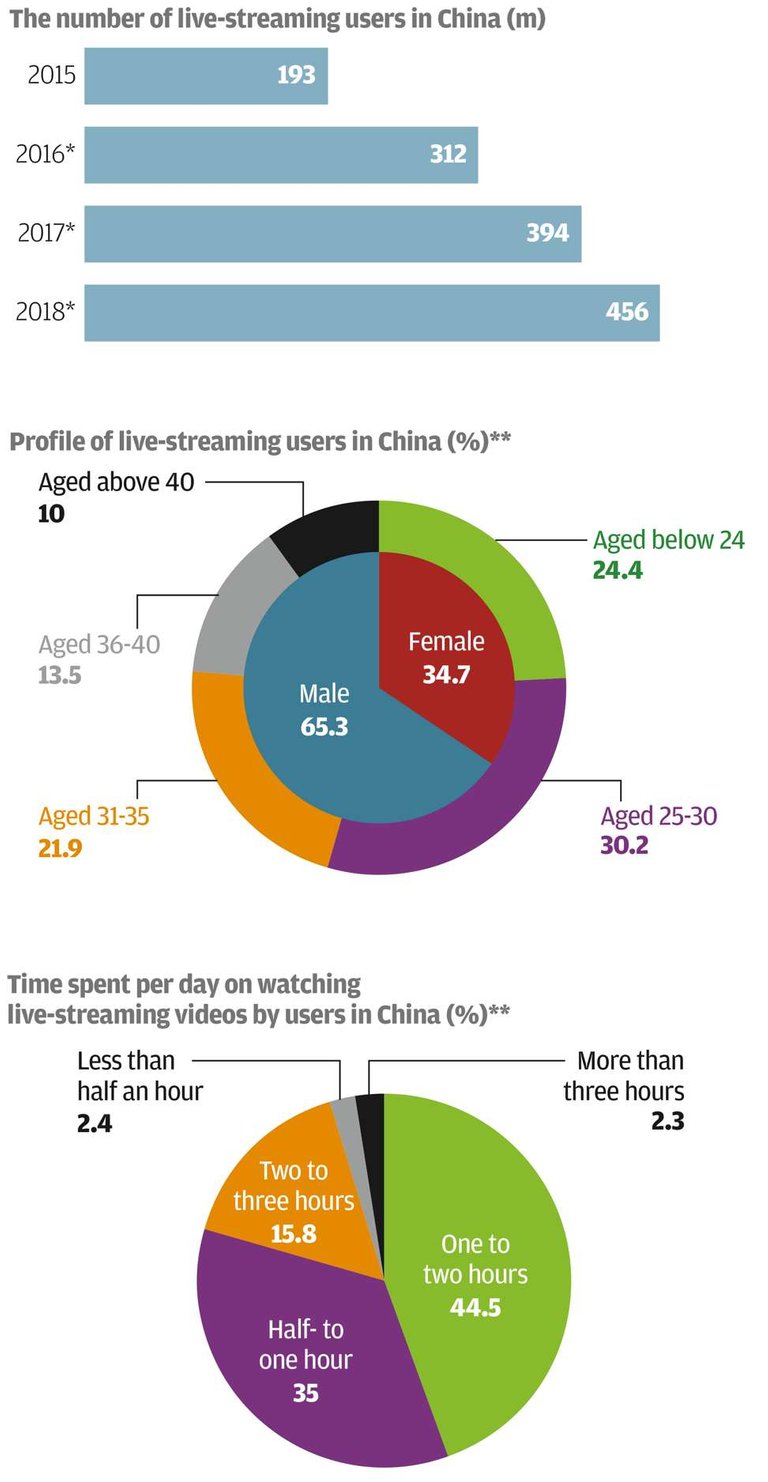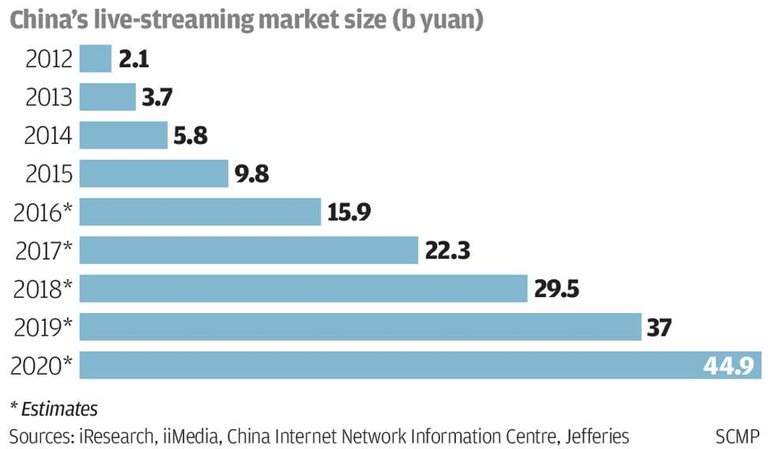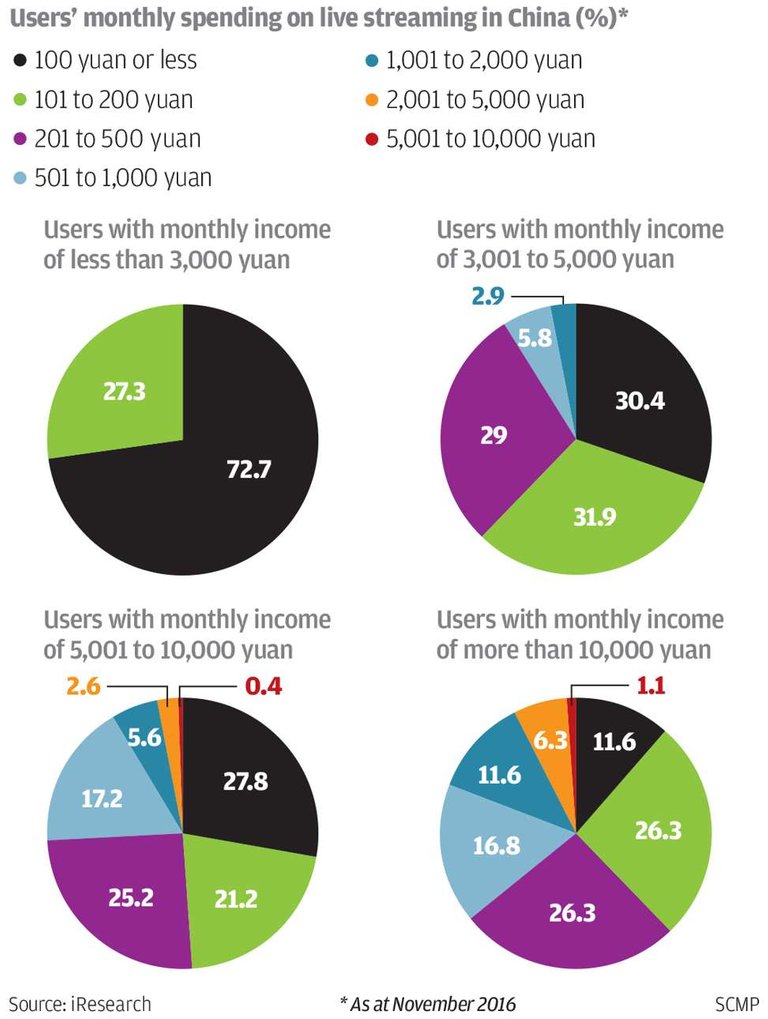Say goodbye to text messaging. Even Snapchat-style social interaction, enriched by photos and videos, is becoming oh-so dated.
The new buzz in China is live video streaming with Chinese characteristics.
Chinese American entrepreneur Andy Tian wants to make “live streaming” a mainstream social media format in the West by using the Chinese formula of combining revenue collection with real-time interactive entertainment, and taking it global.
“In terms of social and mobile, China innovates faster than the Western world. I want to take the advantage of the advanced technologies, products and business trends in China, and take them international,” said Tian, co-founder and chief executive officer of Asia Innovations Group, a Beijing-based start-up focusing on developing mobile social and online entertainment products for global audiences.
Live streaming in China, which Credit Suisse forecasts will be a market worth US$5 billion in 2017, is what Tian sees as a golden opportunity that he can replicate in international markets.
Launched in May 2016, Asia Innovations’ live streaming product UpLive enables anybody around the world to broadcast and view real-time videos via their smartphones.
Be it an English-speaking host in Russia or a Vietnamese speaking broadcaster in Ho Chi Minh city, smartphone users can interact with the reality show-style performances on UpLive via the app’s real-time translation feature that supports six languages – Mandarin, Cantonese, English, Japanese, Vietnamese and Arabic.

Available in more than 100 countries, UpLive is already earning between US$5 million and US$10 million per month, according to Tian, who declined to provide specific numbers. Statistics from market researcher App Annie show that it enjoys the No 1 position in number of downloads in Japan and ranks the second by downloads in a dozen other countries, including Egypt, Saudi Arabia, Finland and Greece.
UpLive’s top earning region is still greater China, but Tian expects the app’s highest revenues to be generated from Japan and English-speaking countries by the end of 2017 because the company has plans to set up offices in the United States and Europe in addition to deepening its operations at six offices outside the mainland – Taipei, Hong Kong, Tokyo, Ho Chi Minh City, Cairo and Istanbul.
Like most of the more than 100 live-streaming apps in the mainland, attractive female broadcasters singing and chatting with the audience constitute the mainstream content on UpLive.
But what makes Tian confident about UpLive’s expansion in the West is its virtual gift-enabled business model. If a viewer likes a broadcast, they can ask a public question or send digital gifts to attract the broadcaster’s attention. The broadcaster can choose to acknowledge the sender’s username and respond with an answer or a thank you via a “big smile”.

“Getting paid is the biggest power behind live-streaming. Facebook, Twitter, YouTube all have live-streaming functionality, but what we have – virtual gift live-streaming – is a new category and it will unleash the economic power for the vast majority of content creators who cannot make a living in the traditional TV era,” Tian told the South China Morning Post.
This interaction gives the sender the joy of recognition and gives the broadcaster financial return as senders need to pay real cash to buy the digital gifts. Virtual gifts on UpLive are priced between US$0.3 to US$148.
Credit Suisse’s estimation puts the live-streaming market in China at nearly the same size as the country’s total movie box office – worth US$5.8 billion last year – but live streaming has an advantage because Chinese millennials view it as a cheap entertainment option.
However, live streaming hasn’t reached mainstream scale in the United States despite being available in the country for years. US-based live-streaming app Meerkat, which enjoyed a big buzz when it launched in 2015, was withdrawn from the market in October last year amid tough competition from Facebook Live and Twitter Periscope.
Neither Facebook nor Twitter pay broadcasters as live streaming mainly serves as a new way for people to engage their followers, but many hosts on UpLive can make 100,000 yuan a month simply by streaming live videos from the couch of their homes for two hours a day – a unique business model Tian is betting will grow the company’s live-streaming business in the West.
Several other Chinese mobile internet companies have adopted the same model to expand the live-streaming business abroad, such as Cheetah Mobile’s Live.me.

Tian, who emigrated to the US when he was 10 years old and returned to China in 2000 as one of the nation’s first internet entrepreneurs, said he has a competitive edge in doing international business from China because of his overseas experience.
Wang Chuanzhen, an analyst with Beijing-based Analysys, said that it’s a smart move for UpLive to focus on overseas markets as the overcrowded live-streaming space in China is already too difficult for newcomers.
“But the live-streaming format alone isn’t enough for the success of any social app. The sustainable development of UpLive depends on its ability to integrate all kinds of social entertainment features together as well as the improvement of contents,” she said.
Hi! I am a robot. I just upvoted you! I found similar content that readers might be interested in:
https://www.thestreet.com/story/13999036/1/chinas-live-streaming-boom-may-be-about-to-pay-off-globally-for-beijing-start-up.html